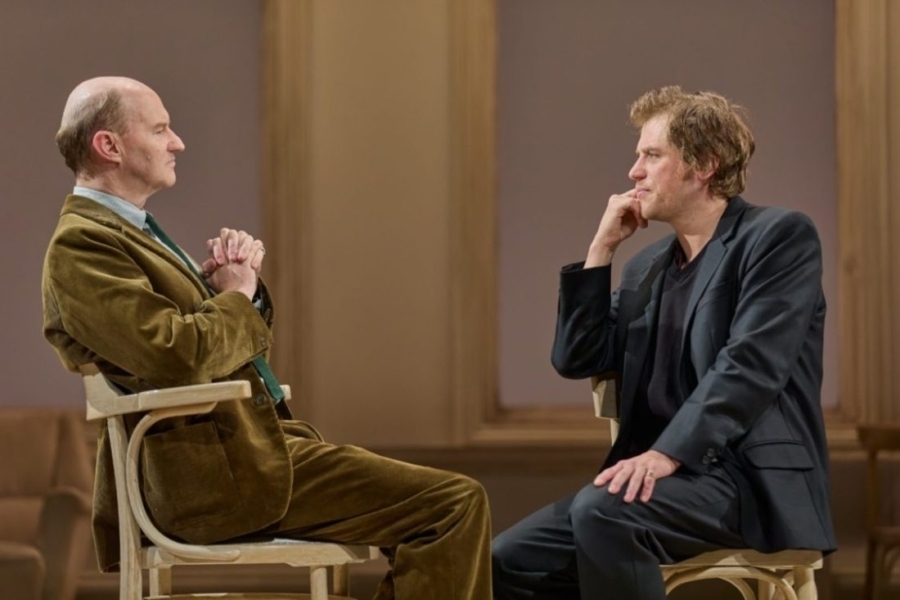The Motive and the Cue opens in a Broadway rehearsal room where the cast assembles with the intention of creating ‘a new Hamlet for our time.’ An avuncular Sir John Geilgud is set against the insouciant Richard Burton who is grandstanding and whingeing by turns. It is openly self-referential – a play about a play which gives us some excellent scenes from Hamlet on the way to understanding how a great production comes into being.
Johnny Flynn gives a superlative performance as Burton, he has the voice off with its deep, mellifluous tones and a hint of Welsh accent. Mark Gatiss is pitch perfect as the urbane, acidly witty but vulnerable Gielgud.
Gielgud is the man who performed the last great definitive Hamlet 40 years previously, a performance which, according to thespian legend, inspired Burton to become and actor. He does not need a promoter to remind Burton of his lines when he fluffs them.
In order to become the greatest interpreter of Hamlet of his generation, Burton must effectively kill his dramatic father Geilgud. For the old man, staying in charge of the direction is his objective at a time when his isn’t getting many offers of work.
In their spats about interpretation, however, Burton imitates Gielgud’s delivery and mocks it. There is an impasse, worsened when Burton turns up for rehearsal drunk and behaves badly as only he can.
‘Take from my direction what you choose’ says Gielgud; ‘What the hell does that mean?’ asks Burton. He fears his performance will be panned as a threadbare production with critics saying he has over-reached himself; he desperately needs direction but is too proud to accept it.
For their production to work the contradiction between the Welsh mining village bellicosity of Burton and the understated finesse of Gielgud has to be overcome to bring the two together.
The mechanism by which we understand this is the sexual life of the two men: Burton’s voracious randiness coupled with the equally insatiable (“fuck me now”) Liz Taylor. This is contrasted with Gielgud’s costive homosexuality, shown in a touching scene with a rent boy where the old actor cannot even bring himself to ask his companion to cuddle him.
It is Elizabeth Taylor, sensually played by Tuppence Middleton, who is the intermediary who reconciles the two men, meeting Gielgud at a hotel breakfast where they entertain each other with superlative wit.
In The Motive and the Cue, the writer Jack Thorne strives to show how this clash of talents combine to arrive at an understanding to the play and the nature of Hamlet which made the 1964 production a defining landmark and the longest running Hamlet in Broadway history.
The cast is huge for modern theatre with actors, not all of whom are fully utilised. Rebecca Collingwood playing Ophelia seems set up for an influential role which never transpires.
There is no better play in the West End for those who are fascinated by the art of acting and who love the theatre.

